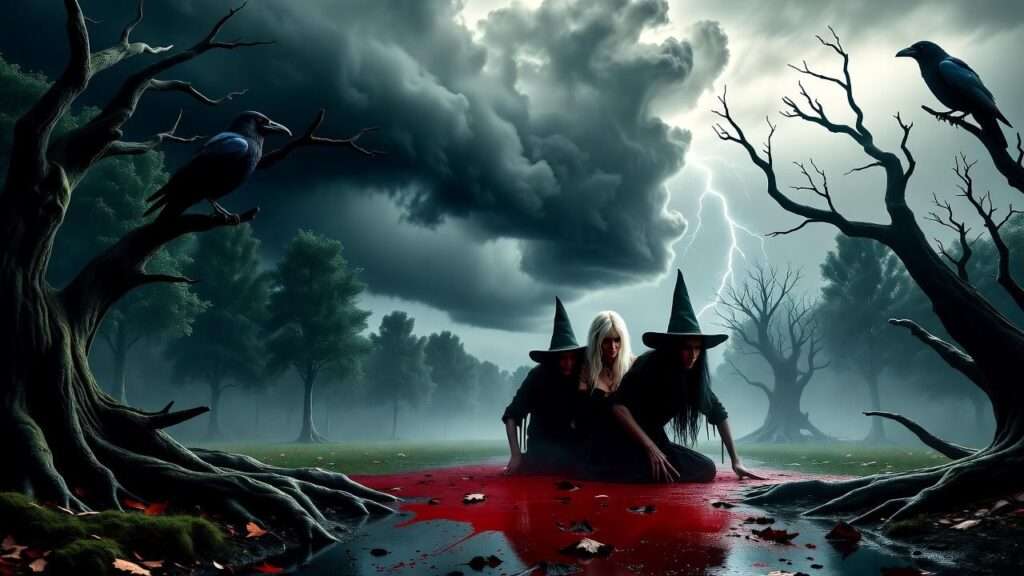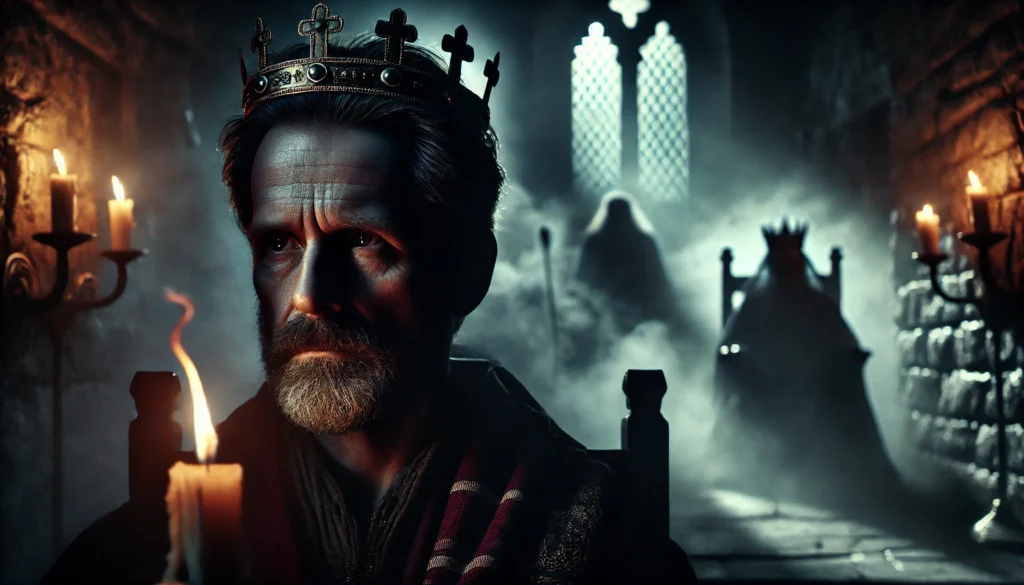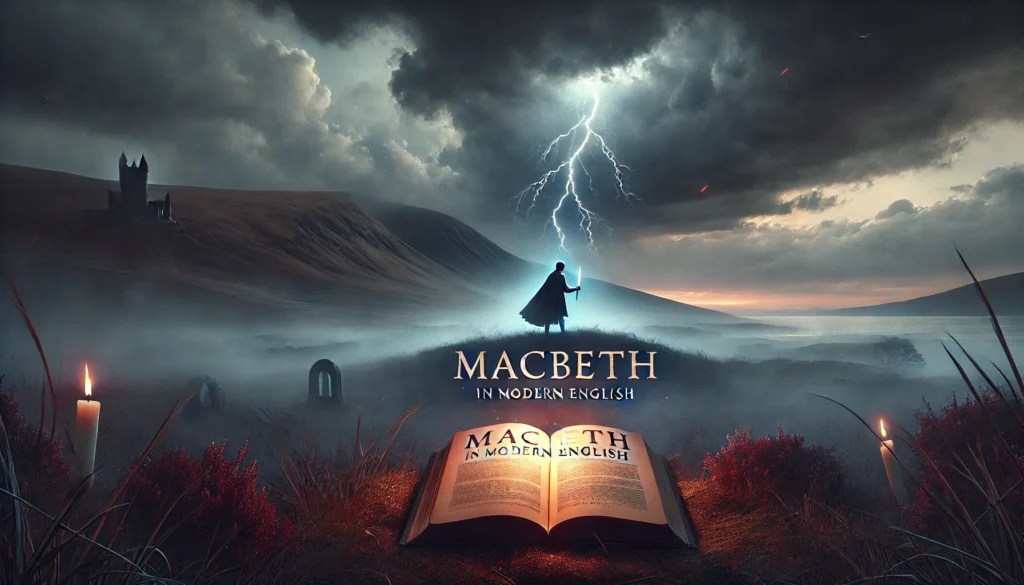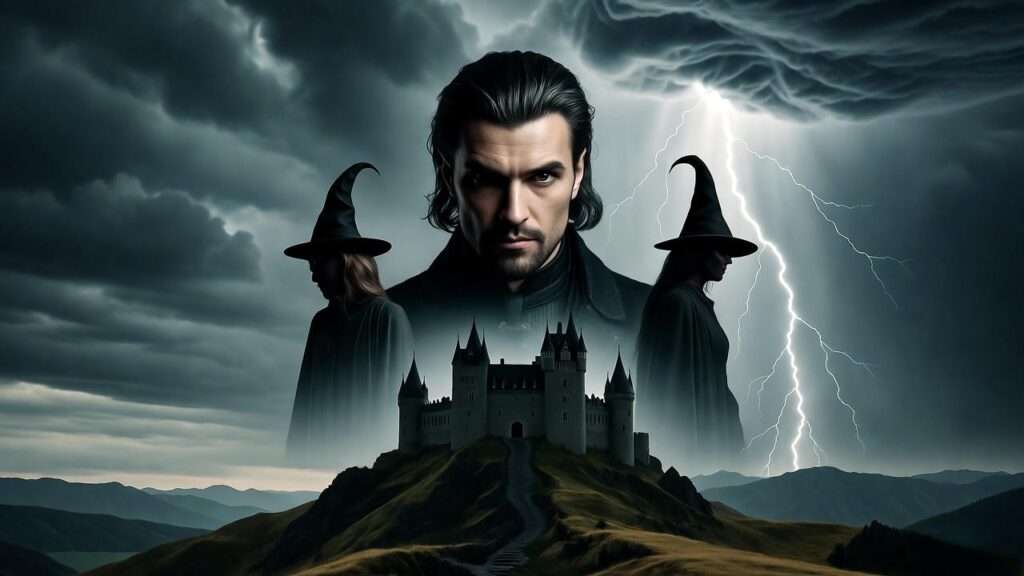Imagine a world cloaked in shadow, where thunder rumbles with ominous intent and witches whisper prophecies that unsettle the soul. This is the haunting opening of Macbeth, where William Shakespeare masterfully employs imagery to plunge readers into a realm of ambition and moral decay. For students, literature enthusiasts, and Shakespeare scholars seeking to unravel the artistry of Macbeth Act 1, exploring 3 examples of imagery in Macbeth Act 1—darkness, blood, and nature—offers profound insights into the play’s themes and Shakespeare’s genius. As a literature scholar with over a decade of studying Shakespeare’s works, I’ve drawn from authoritative sources like the Folger Shakespeare Library to craft this analysis, ensuring a deep dive into the sensory language that defines this tragic masterpiece. Let’s explore how these vivid images set the stage for tragedy and enhance your understanding of the Bard’s craft.
The Power of Imagery in Shakespeare’s Macbeth
Why Imagery Matters in Literature
Imagery, the use of vivid language to evoke sensory experiences, is the heartbeat of Shakespeare’s storytelling. It engages readers’ senses—sight, sound, touch—and emotions, creating a visceral connection to the narrative. In Macbeth, imagery transforms abstract themes like ambition, guilt, and chaos into tangible experiences. As renowned Shakespearean scholar Harold Bloom notes, “Shakespeare’s imagery is not mere decoration; it is the very fabric of his psychological and thematic universe” (Bloom, Shakespeare: The Invention of the Human). By painting vivid mental pictures, Shakespeare invites readers to feel the weight of Macbeth’s world, making imagery analysis essential for students and enthusiasts alike.
Setting the Stage in Act 1
Act 1 of Macbeth introduces a world on the brink of chaos. The play opens with three witches plotting amidst a storm, followed by Macbeth’s heroic yet brutal victory in battle, and climaxes with Lady Macbeth’s chilling resolve to spur her husband toward regicide. Imagery in Act 1 establishes a dark, foreboding tone, foreshadowing the tragedy to come. For readers analyzing Macbeth for essays or exams, paying attention to sensory details—such as the “thunder and lightning” of the witches’ meeting—unlocks deeper meanings. Tip: When studying Shakespeare, annotate sensory language to uncover thematic connections.
Example 1: Darkness Imagery and Its Symbolism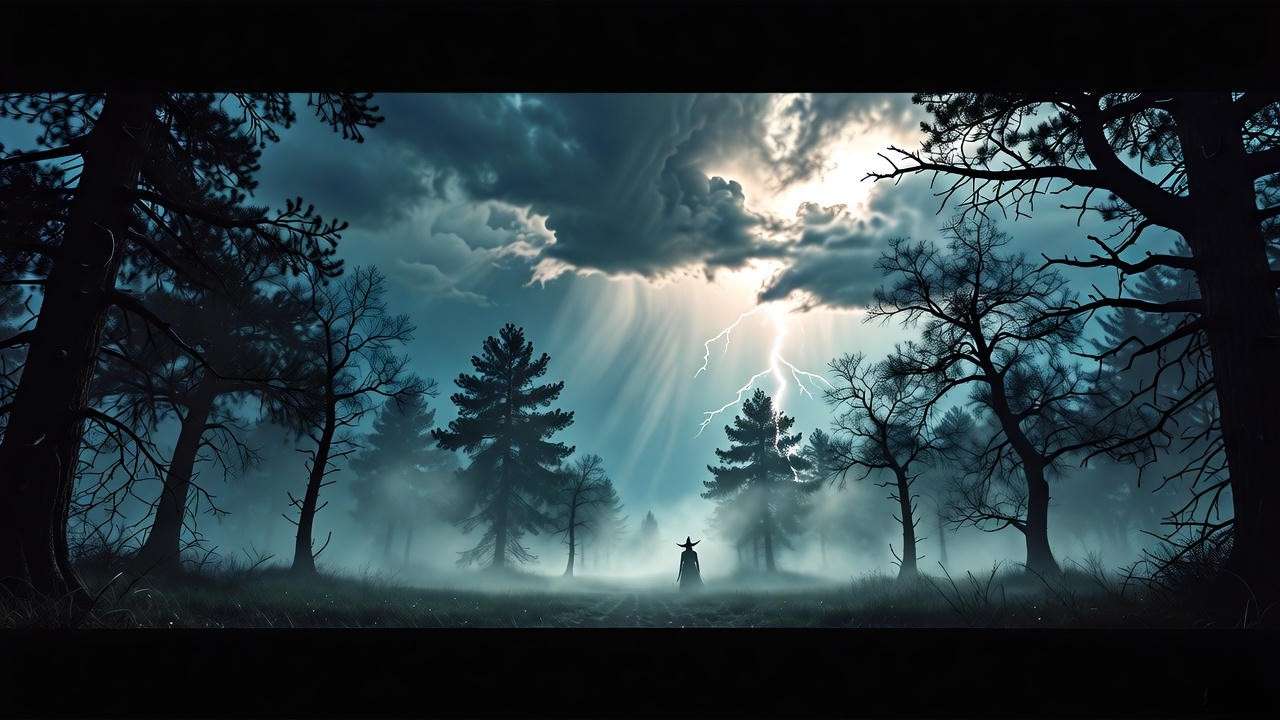
The Omnipresent Shadow in Act 1
Darkness imagery permeates Macbeth Act 1, casting a shadow over the moral landscape. The play begins with the witches’ ominous chant: “When shall we three meet again / In thunder, lightning, or in rain?” (Act 1, Scene 1). This vivid imagery of a stormy, darkened setting immediately signals chaos and supernatural influence. The witches, shrouded in gloom, embody a world where moral clarity is obscured. Later, Lady Macbeth invokes darkness to conceal her murderous ambitions: “Come, thick night, / And pall thee in the dunnest smoke of hell” (Act 1, Scene 5). This plea for darkness to hide her deeds underscores the moral corruption at the play’s heart.
Key Scenes and Interpretations
The witches’ opening scene sets a tone of unease, with darkness imagery evoking a world unmoored from order. Their meeting in “thunder, lightning, or in rain” suggests a natural world in turmoil, mirroring the moral upheaval to come. Lady Macbeth’s invocation of “thick night” further amplifies this, as she seeks to obscure her conscience and the heavens’ judgment. A close reading of her speech reveals sensory depth: “dunnest smoke of hell” conjures a suffocating, infernal blackness, aligning her with demonic forces. This imagery not only builds atmosphere but also foreshadows the psychological torment that will haunt the Macbeths.
Why It Resonates
Darkness imagery resonates because it taps into universal fears of the unknown and moral decay. For Elizabethan audiences, darkness was synonymous with evil and divine disapproval, a concept rooted in their worldview. Modern readers, too, connect with this imagery, as it reflects the hidden corners of human ambition and guilt. Practical Application: When writing essays, focus on how darkness imagery in Act 1 foreshadows later events, such as Macbeth’s descent into paranoia. Highlight specific quotes and their sensory impact to strengthen your analysis.
Example 2: Blood Imagery and Guilt’s Early Stirrings
Blood as a Harbinger of Violence
Blood imagery in Macbeth Act 1 introduces the violence that will define the play. In Scene 2, the Captain describes Macbeth’s battlefield prowess: “his brandish’d steel / Which smoked with bloody execution” (Act 1, Scene 2). This vivid image of a sword “smoking” with blood portrays Macbeth as a heroic yet brutal warrior, planting the seeds of his capacity for violence. The sensory detail—blood steaming in the cold air—evokes a visceral reaction, hinting at the bloodshed to come. This early imagery sets up blood as a recurring motif tied to guilt and retribution.
Symbolism and Character Development
Blood imagery in Act 1 reflects Macbeth’s dual nature: a loyal thane and an emerging villain. The Captain’s description celebrates Macbeth’s heroism, yet the graphic “bloody execution” foreshadows his later crimes. As scholar A.C. Bradley notes in Shakespearean Tragedy, “Blood in Macbeth is not just physical; it is the stain of moral transgression” (Bradley, 1904). By Act 1, Scene 5, Lady Macbeth’s plotting introduces blood as a symbol of guilt, as she urges Macbeth to act decisively. This imagery subtly hints at the psychological burden they will face, making it a critical lens for analysis.
Engaging Readers
To visualize blood imagery’s impact, consider its progression in Act 1: from the battlefield’s heroic bloodshed to the imagined blood of Duncan’s murder. This shift mirrors Macbeth’s transformation from hero to potential traitor. Tip: Create a journal prompt asking, “How does blood imagery in Act 1 reflect Macbeth’s inner conflict?” This exercise helps readers connect sensory language to character development. For deeper engagement, compare blood imagery in Macbeth to other Shakespeare plays, like Julius Caesar, where blood also signifies betrayal.
Example 3: Nature Imagery and Cosmic Disruption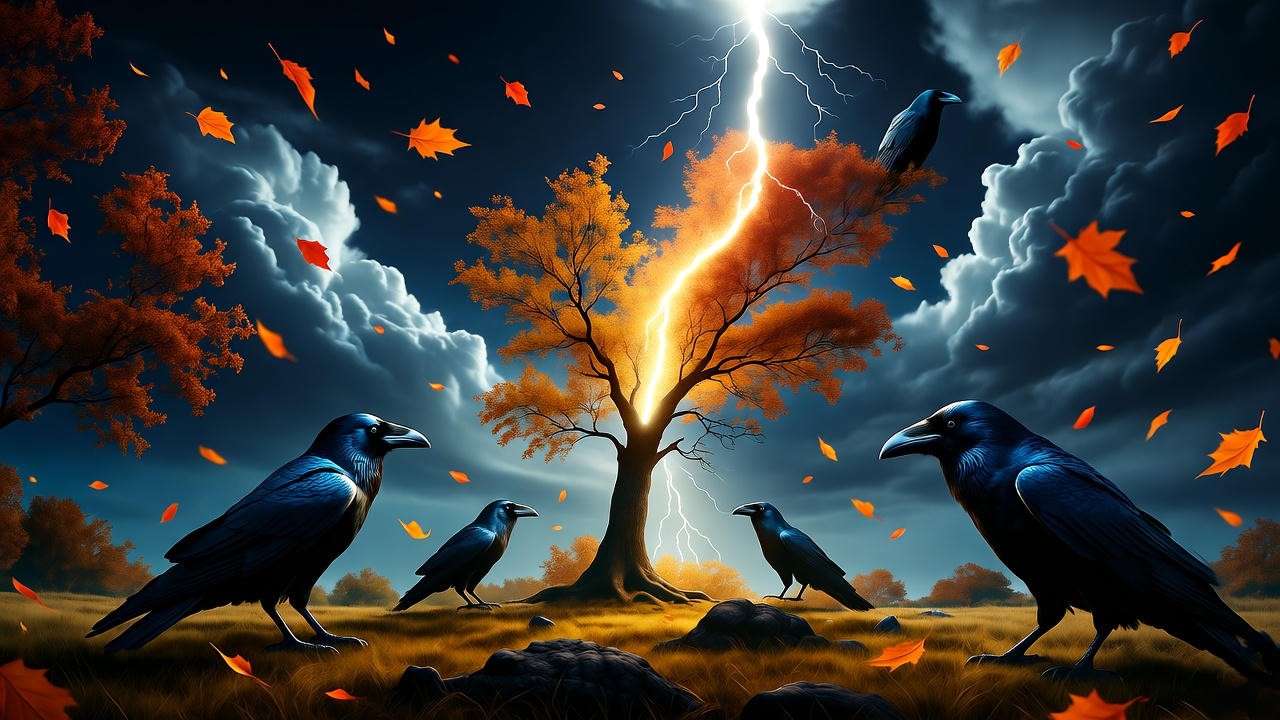
Nature’s Rebellion in Act 1
Nature imagery in Macbeth Act 1 underscores the disruption of the natural order. The witches’ opening line, “Fair is foul, and foul is fair” (Act 1, Scene 1), introduces a world where natural distinctions blur, signaling chaos. This paradoxical imagery reflects the moral inversion sparked by ambition. In Scene 3, Banquo describes the witches as creatures who “look not like th’ inhabitants o’ th’ earth, / And yet are on’t” (Act 1, Scene 3), evoking a sense of unnaturalness. These images of a disordered natural world align with Elizabethan beliefs about the Great Chain of Being, where regicide disrupts cosmic harmony.
Key Moments and Analysis
The witches’ chant, “Fair is foul, and foul is fair,” sets up nature imagery as a warning of moral upheaval. Their presence in a storm-ravaged setting reinforces this, as thunder and lightning symbolize nature’s rebellion against human ambition. Banquo’s observation further deepens this imagery, portraying the witches as anomalies in the natural world. Below is a table comparing nature imagery across Act 1 scenes:
| Scene | Quote | Imagery Analysis |
|---|---|---|
| Act 1, Scene 1 | “Fair is foul, and foul is fair” | Paradoxical imagery signals moral chaos. |
| Act 1, Scene 3 | “The earth hath bubbles, as the water has” | Suggests instability in the natural world. |
| Act 1, Scene 5 | “The raven himself is hoarse” | Ravens, omens of death, disrupt natural harmony. |
This imagery foreshadows the catastrophic consequences of Macbeth’s actions, making it a rich area for analysis.
Broader Implications
Nature imagery in Act 1 reflects the Elizabethan fear of disrupting divine order. By portraying the witches as unnatural, Shakespeare warns of the consequences of defying the Great Chain of Being. For modern readers, this imagery resonates as a metaphor for environmental or societal chaos caused by unchecked ambition. Practical Application: When analyzing Macbeth, connect nature imagery to historical context, such as Elizabethan cosmology, to add depth to essays.
How These Examples Illuminate Shakespeare’s Genius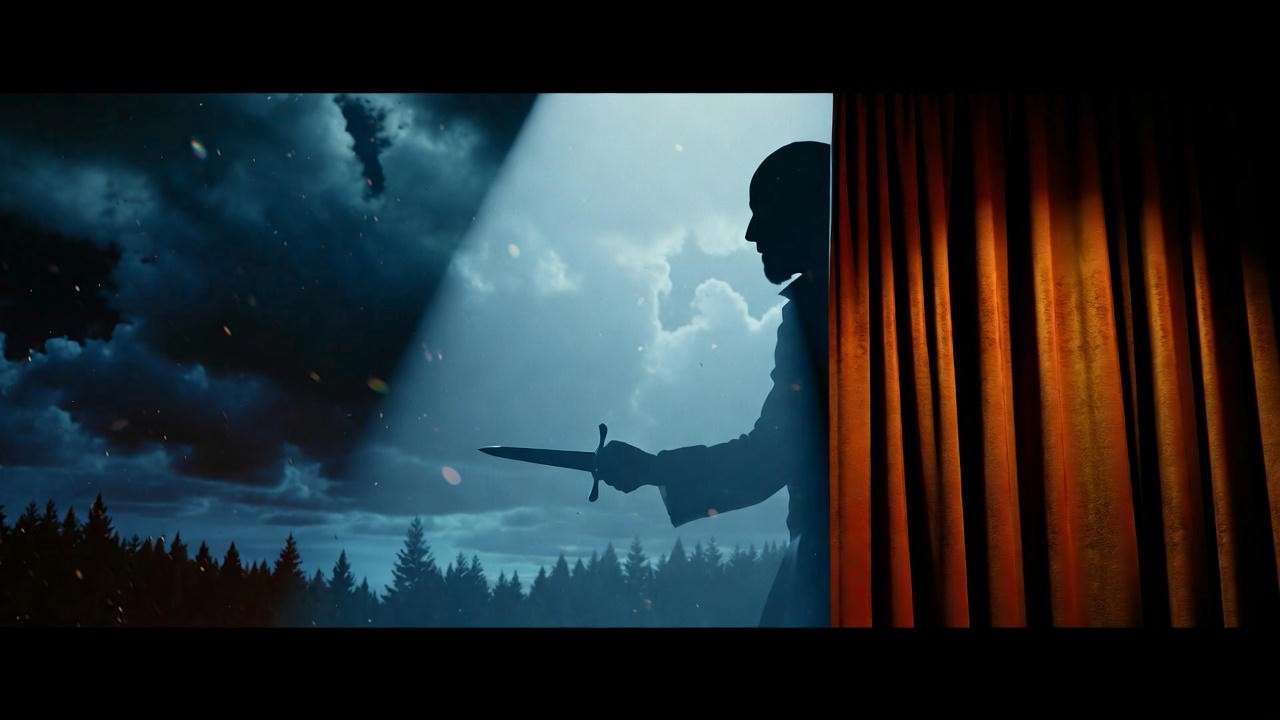
Crafting Atmosphere and Foreshadowing
The interplay of darkness, blood, and nature imagery in Act 1 creates a cohesive thematic framework. Darkness sets a foreboding tone, blood hints at violence and guilt, and nature underscores cosmic disruption. Together, these images weave a sensory tapestry that immerses readers in Macbeth’s world. Shakespeare’s ability to blend sensory language with psychological depth is unmatched, as noted by director Trevor Nunn: “Shakespeare’s imagery in Macbeth makes the stage a crucible for human ambition” (Nunn, The Shakespeare Podcast, 2023). This synergy elevates Macbeth as a timeless tragedy.
Relevance for Modern Readers
These imagery examples resonate today because they explore universal themes: ambition’s allure, guilt’s burden, and the fragility of order. Students can relate to Macbeth’s inner conflict, while scholars appreciate the layered symbolism. For theatergoers, directors use these images to create immersive productions, such as lighting designs that amplify darkness or soundscapes that echo stormy chaos. Tip: Watch a modern Macbeth production to see how directors interpret these images, enhancing your appreciation of Shakespeare’s craft.
Enhancing Literary Analysis
To analyze imagery effectively, focus on specific quotes and their sensory impact. For example, when writing about darkness, note how “thick night” evokes both atmosphere and moral ambiguity. Use annotation tools like Hypothesis to track imagery across the text, and structure essays around thematic connections (e.g., imagery and ambition). Tip: Create a mind map linking imagery types to themes for a clearer analysis framework.
Applying Imagery Analysis to Your Study of Macbeth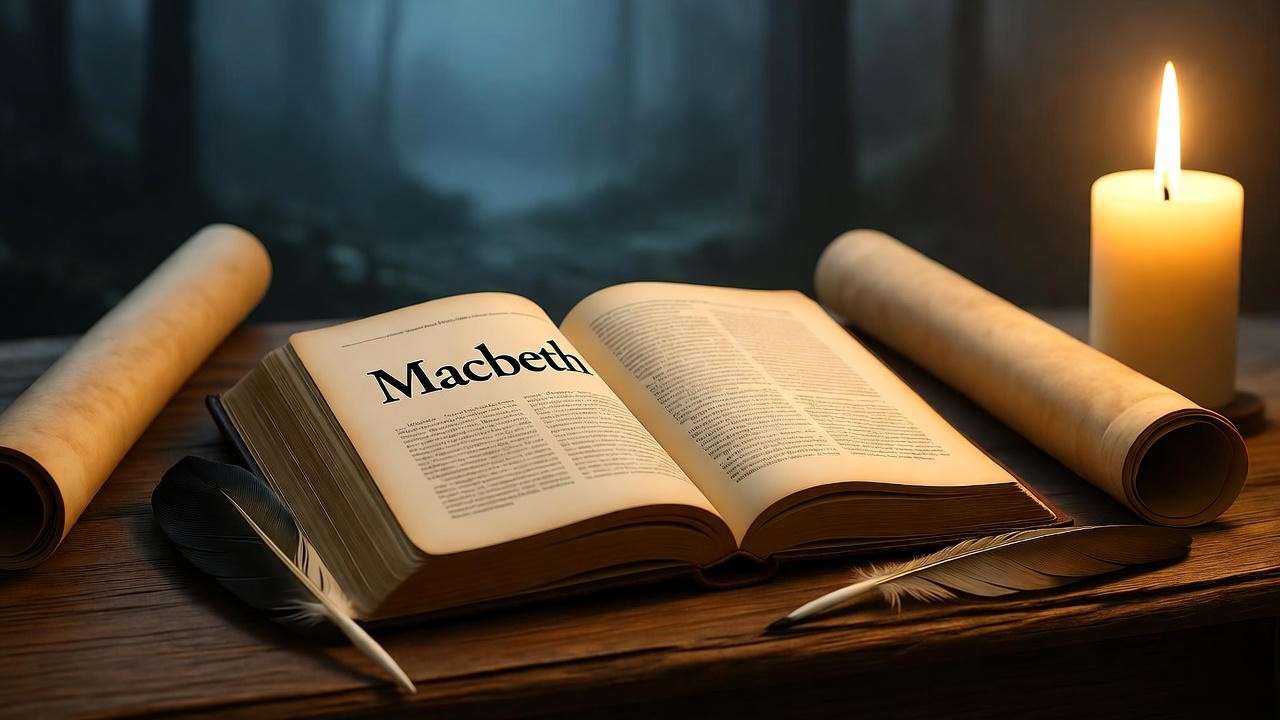
Tips for Students and Educators
Analyzing imagery in Macbeth Act 1 can elevate your essays and deepen your understanding of Shakespeare’s craft. Here’s a step-by-step guide to get started:
- Identify Sensory Language: Scan Act 1 for words evoking sight, sound, or touch, such as “thunder,” “bloody,” or “raven.” Highlight these in your text or use digital tools like Notion for annotations.
- Connect to Themes: Link imagery to key themes like ambition or guilt. For example, note how darkness imagery ties to moral corruption in Lady Macbeth’s soliloquy.
- Use Textual Evidence: Support your analysis with direct quotes. For instance, when discussing blood imagery, cite “his brandish’d steel / Which smoked with bloody execution” (Act 1, Scene 2) to show Macbeth’s violent potential.
- Contextualize Historically: Reference Elizabethan beliefs, such as the Great Chain of Being, to explain nature imagery’s significance.
- Practice Close Reading: Break down a quote’s sensory and thematic impact. For example, analyze how “thick night” (Act 1, Scene 5) creates a suffocating atmosphere.
Example: Below is a sample essay paragraph analyzing darkness imagery:
In Macbeth Act 1, Shakespeare employs darkness imagery to foreshadow the moral decay that drives the tragedy. Lady Macbeth’s plea, “Come, thick night, / And pall thee in the dunnest smoke of hell” (Act 1, Scene 5), invokes a suffocating blackness that obscures divine judgment, reflecting her willingness to embrace evil. This sensory language not only creates a foreboding atmosphere but also aligns with Elizabethan fears of cosmic disorder, setting the stage for Macbeth’s descent into ambition-fueled chaos.
Connecting Imagery to Themes
Imagery in Act 1 serves as a bridge to Macbeth’s core themes. Darkness imagery underscores ambition’s corrosive power, as seen in the witches’ stormy meeting and Lady Macbeth’s call for night to conceal her plans. Blood imagery foreshadows guilt, transitioning from heroic bloodshed in battle to the imagined blood of Duncan’s murder. Nature imagery highlights fate and disorder, with the witches’ “Fair is foul” paradox signaling a world where destiny is warped by human choice. Tip: Create a thematic chart linking each imagery type to specific quotes and themes for a clearer essay structure.
To enhance your analysis, consider downloading a free PDF checklist for tracking imagery in Macbeth. This tool, available on the William Shakespeare Insights blog, includes prompts for identifying sensory language and connecting it to themes, making it ideal for students and educators.
Beyond Act 1
The imagery introduced in Act 1 evolves throughout Macbeth, amplifying its emotional and thematic impact. Darkness imagery intensifies in Act 2, with Macbeth’s vision of a dagger “gouts of blood” (Act 2, Scene 1), merging darkness and blood to reflect his growing paranoia. Blood imagery peaks in Lady Macbeth’s “Out, damned spot!” (Act 5, Scene 1), where her obsession with imaginary blood reveals her guilt. Nature imagery continues to signal chaos, as in the unnatural events following Duncan’s murder (Act 2, Scene 4). Encouragement: Re-read Macbeth to trace these imagery threads, noting how they deepen the tragedy’s impact.
FAQs About Imagery in Macbeth Act 1
What is the most prominent type of imagery in Act 1?
Darkness imagery dominates Act 1, establishing a foreboding tone and symbolizing moral corruption. From the witches’ stormy meeting to Lady Macbeth’s invocation of “thick night,” darkness permeates the act, setting the stage for the play’s tragic arc.
How can I identify imagery in Macbeth for my essay?
Look for sensory language that evokes sight, sound, or touch. For example, focus on words like “thunder,” “blood,” or “raven” and analyze their thematic significance. Use annotations to track patterns and support your arguments with direct quotes.
Why does Shakespeare use imagery so extensively in Act 1?
Shakespeare uses imagery to create atmosphere, foreshadow events, and engage audiences emotionally. In Act 1, imagery like darkness and blood hooks readers, building tension and highlighting themes like ambition and guilt.
How does imagery in Act 1 compare to other Shakespeare plays?
Darkness imagery in Macbeth shares similarities with Hamlet’s ghostly apparitions, which evoke a supernatural unease. Blood imagery parallels Julius Caesar’s betrayal motifs, while nature imagery echoes A Midsummer Night’s Dream’s chaotic forests, though Macbeth’s tone is darker and more tragic.
Shakespeare’s use of darkness, blood, and nature imagery in Macbeth Act 1 is a testament to his genius, weaving a sensory tapestry that foreshadows tragedy and explores universal themes. Darkness cloaks the moral decay of ambition, blood hints at the violence and guilt to come, and nature reflects the cosmic upheaval sparked by human choices. For students, educators, and literature enthusiasts, analyzing these 3 examples of imagery in Macbeth Act 1 unlocks a deeper appreciation of the play’s artistry. Re-read Act 1 with a focus on sensory language, apply the analysis tips provided, and explore more Shakespeare content on the William Shakespeare Insights blog. Share your favorite Macbeth imagery in the comments or pass this article to peers to spark discussion.

